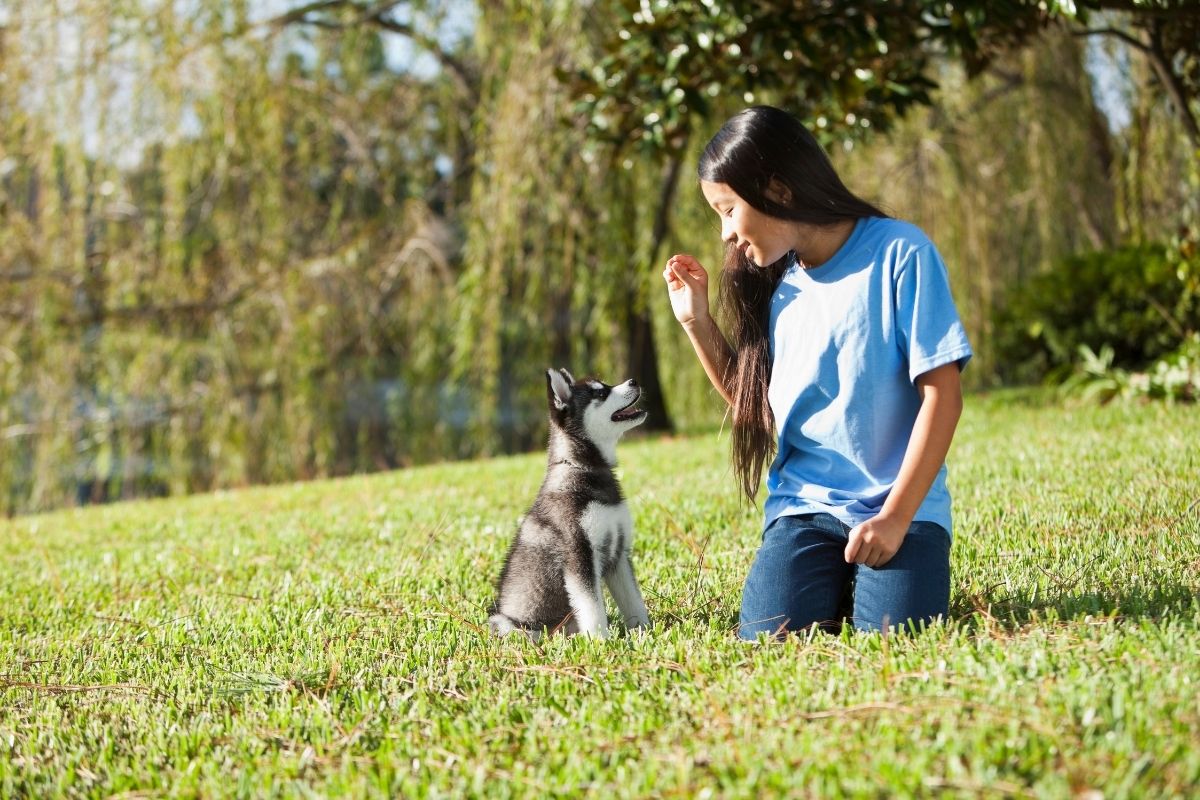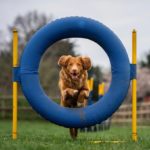When it comes to puppies, you will realize that they are constantly learning. Whether it’s from your training, socialization with other dogs or other people, or their environment. This training is a vital foundation that sets up puppies for their adult lives.

But when is the best time to start training your puppy? In this article, we will discuss the best age to start training your puppy. So, if this is something you are interested in, then read on for more.
What’s The Right Age To Start Training Your Puppy?
The best time to start training your puppy is whenever you bring them home. This is normally at around 8 weeks old, but don’t worry if you bring your little furry friend home after this 2-month time frame.
At young ages, puppies will be able to learn basic cues like stay, come here, sit, etc.
Puppy Training Tips
Training a puppy may seem like a daunting or difficult thing to do, but it is easy if you follow a few basic steps! Check out our tips for training puppies below!
Use Positive Reinforcement
While you may have heard or read about different types of training techniques, the best one, by far, is positive reinforcement training. This type of training is backed by science.
Positive reinforcement is the process of rewarding the subject, in this case, your puppy, in order to encourage the behavior you want from them.
For example, if you ask your puppy to sit, and they do, then you give them a treat for doing so. This teaches your puppy that if they listen to you, they get rewarded.
Next, you need to work out what reward you will give your puppy to encourage good behavior. Some puppies appreciate their regular kibble for training as well as food, while other puppies will prefer specific training treats.
Additionally, it is important to note that some puppies may not be motivated by their stomachs at all! These puppies may prefer to train with a toy, or simple praise like “well done!”, or “good boy!”
It is important to note that negative reinforcement, like dominance-handling techniques, prong, choke, shock collars (correcting devices), harsh corrections, or punishment, should be avoided.
These are not good for your dog, and can actually cause lasting consequences like anxiety and fear when your dog becomes an adult.
Make Sure The Training Sessions Are Short
It is also a good idea to keep the training sessions to around five minutes every time and try not to exceed more than fifteen minutes of training a day. This is important to remember, because puppies often do not have a very long attention span.
It is also wise to end your training session in a positive way, so your puppy becomes excited for the next one.
Consistency Is Key
It is vital that you are consistent when it comes to training your puppy. You must always use the same cue word or hand signal when trying to teach your puppy a specific action.
Train Your Puppy In Different Environments

Different environments are great for puppy training! You should take your furry friend to the beach, park, a family member’s house, etc, to train them.
There will be a variety of sights and smells in these places that your puppy hasn’t experienced before, so it is good to ensure they will become confident in these environments.
However, do not do this until your puppy has had their full set of vaccinations because it will not be safe.
Patience Is Important
Throughout this process, you must not forget to be patient. Puppies are like young children, they are always learning and growing. They will not always know what you are asking of them, and they will make mistakes.
It is also important to note that every puppy is different, and they will all learn at different paces. You need to make sure that in these moments where you may feel frustrated that you need to be patient and stick with the training.
A Timeline For Puppy Training
Here is a timeline to help guide you with your puppy training. Remember that this is a guideline, and you should always double-check with a professional on the best ways to train your puppy
8 Weeks Old
When your puppy is 8 weeks old, the best way to train them is with cues. This means teaching them how to sit, stay, give paw, etc.
You can also begin training with a leash. It’s best to start leash training inside the house.
Let them wear their harness and leash and provide treats. Train their call and response, and make sure they can walk on the leash without getting distracted.
You can also try general handling training at this stage. Let your puppy grow accustomed to being touched, stroking them, playing with them, etc. Pay close attention to their paws and ears, because this will help with visits to the vet!
8-10 Weeks Old
Now, you need to try crate training. You need to make sure your puppy sees their crate as a calm and safe place. Let them sit there in 10-minute intervals, and reward them for going inside.
10-12 Weeks Old
Now, you need to teach your puppy not to bite. When they start to bite, redirect their attention to a toy or another appropriate object.
12-16 Weeks Old
At this age, your puppy should learn potty training. Take them outside in the mornings, after naps and food, and playtime, periodically. Make sure you use positive reinforcement whenever they go outside for bathroom purposes.
6 Months Old
It is difficult to start training a puppy once they get to six months old. At this stage, you need to build on their existing skills in more public settings, like a dog park!
Final Thoughts
You should start training puppies at around 8 weeks, which is around the age that they get brought home. The best ways to train a puppy are listed above, but you should always check with a professional to ensure you are training your puppy in the best way.
We hope this article tells you everything you need to know about training puppies.
- 8 Signs That Your Dog Is In Heat - November 8, 2022
- Why Is My Dog Whining Whilst Carrying A Toy In Their Mouth? - August 17, 2022
- Reasons Why Your Dog’s Poop Is White And What To Do About It - August 17, 2022









